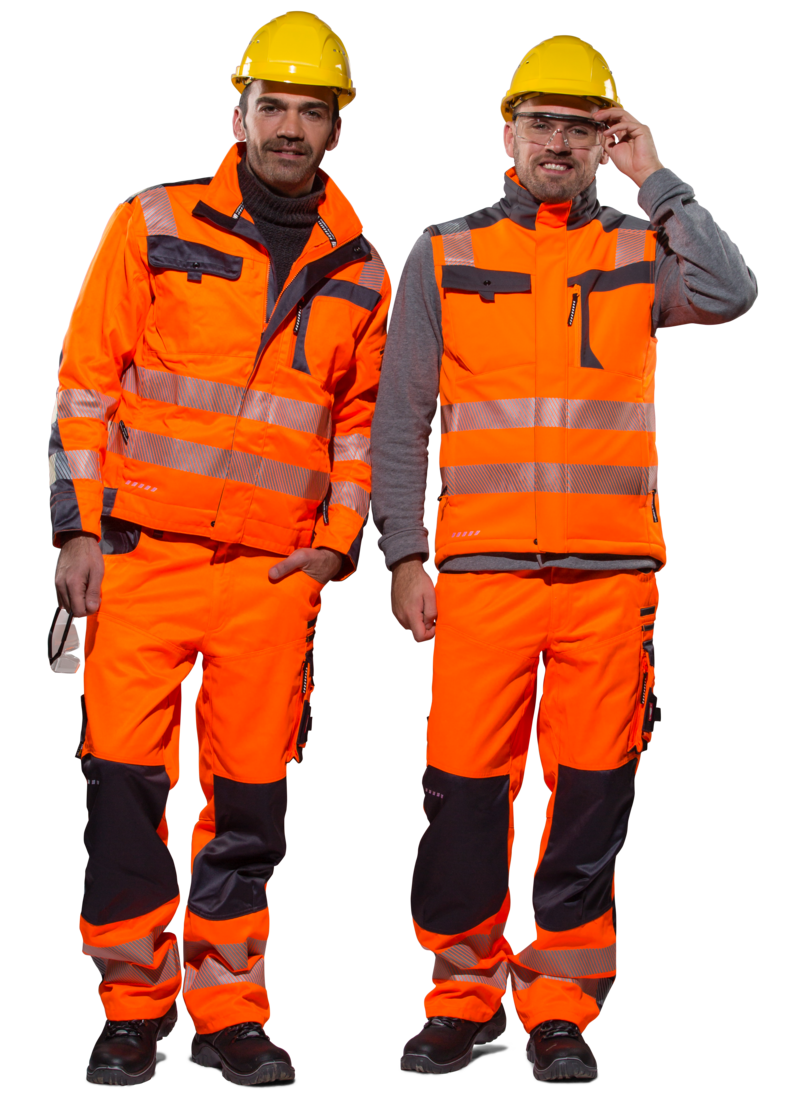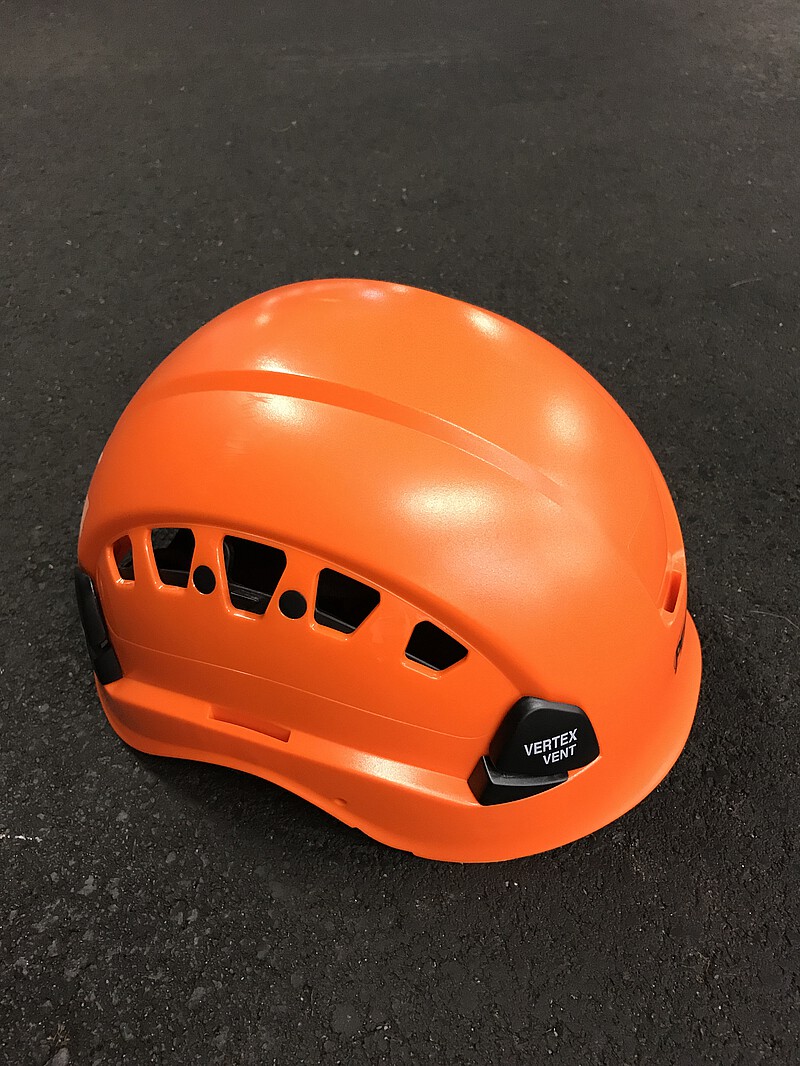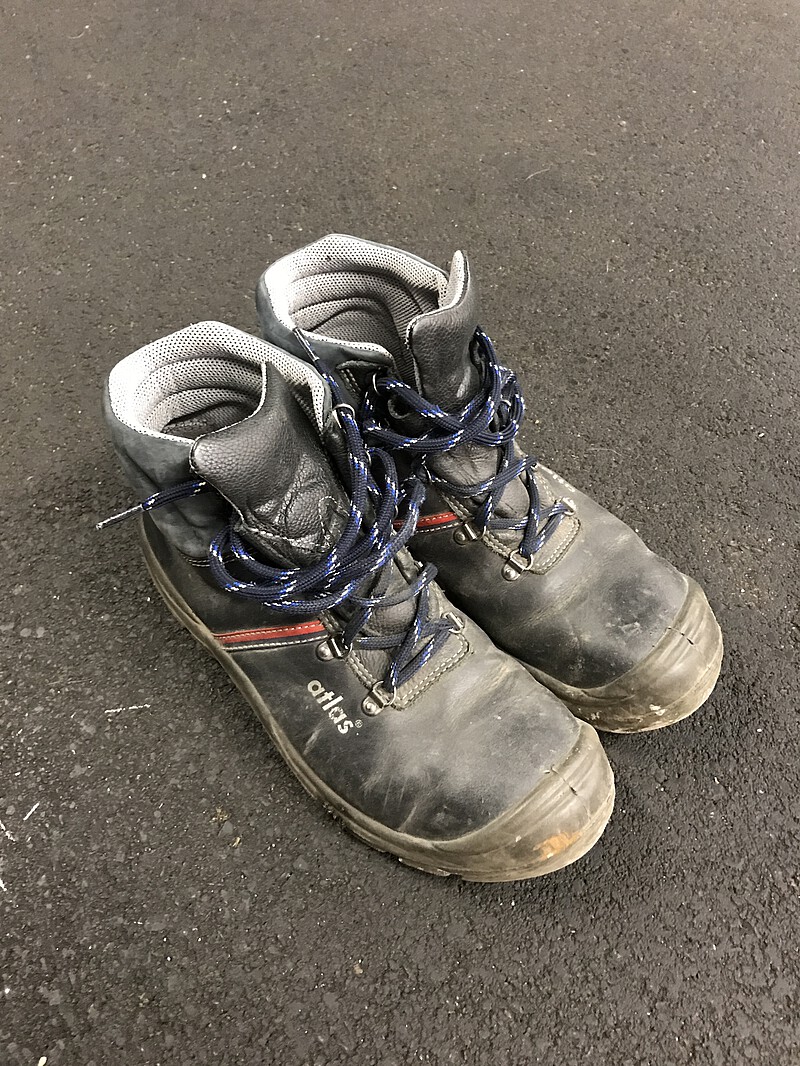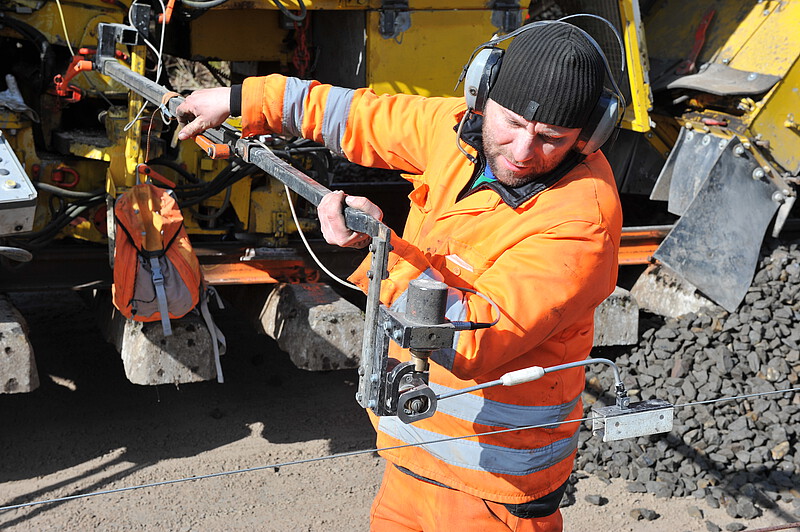Personal protective equipment
Any member of staff, who has to work in a variety of exposed areas, must reduce the risk of accidents or at least contribute to a reduction of the consequences by wearing personal protective equipment (PPE).
Operational circumstances mean that insured people face accident and health hazards. For this reason, the contractor has to make PPE available and provide for its maintenance. It is important to note that technical and organizational measures in respect of personal protective equipment need to be treated as a priority. Only if the danger of accident and health hazards cannot be eliminated by these measures does PPE come into use for hazard avoidance.
Legislation/Accident Prevention Regulation (UVV Unfallverhütungsvorschrift)
The contractor has to provide facilities, arrangements and measures to protect against accidents at work. These must comply with the provisions of the Accident Prevention Regulation and any valid accident prevention regulations that apply to him, as well as other generally recognized health and safety rules. If in other legislation, especially in occupational health and safety regulations, something else is specified, the provisions of the Accident Prevention Regulations take precedence.
Head protection (Hard hat)
A safety helmet (hard hat) as specified in the standard EN 397 is made of plastic (polyethylene) and available in various colours. On the inner side it is individually adjustable and also has a headband, which should be renewed after frequent wear. The safety helmet serves to protect the head from falling parts, and to protect while standing under swinging loads. It can be used in a work space, which due to its confined nature has an increased risk of injury. There are also safety helmets (such as for chain saw noise protection), on which side mounted articulated hearing protectors are fitted. This helmet is used when working in the forest or working with heavy construction machines. There are also safety helmets which can be fitted with a light (such as for mining). This can also be installed later. The employer must also provide instruction on the use of this equipment and explain the obligation to wear it.
Safety footwear
The wearing of safety footwear is essential on many construction sites and an element of the PPE. All professional groups carry out widely different work and safety footwear gives the workers a positive feeling of protection. The shoes are divided into different safety classes and the right classification should be used for each area. The measures for safety footware are contained in EN 20345. The safety depends on the needs of the respective professional group, such as chefs (e.g. waterproof), gardeners or electricians (e.g. insulation). In track construction, for example, Class S2 offers resistance to humidity and moisture, which can be maintained by appropriate care. The front of the shoe has an enclosed protective toe (made of steel, aluminium, titanium or plastic) which offers protection for the toes. As a result, the feet of employees in the craft trades or industry are protected from serious injuries and bruises if parts fall down.
The load carrying capacity of the protective caps in the shoes is 100 to 200 Joules.
Safety shoes are made of rubber, PU/TPU and can also have a steel sole or a slip-resistant sole. The slip resistance and stability is guaranteed by these substances.
Classification list |
SB - Basic requirements |
S1 - Additional requirements (enclosed heel area) |
S1P - as S1 and in addition penetration resistance |
S2 - as S1 and water proof under some conditions |
S3 - as S2 but in addition more water proof |
S4 - as SB with additional energy absorption in the heel area |
S5 - as S4 and in addition water proof |
The basic requirement SB applies to the safety shoe. Further classifications give the staff information about additional equipment. The Classification S3 and S1P, for example, refer to a penetration resistant sole which prevents stepping on sharp objects such as nails or similar objects on construction sites. The penetration resistance is produced by the inclusion of one or more thin steel sheets in the sole.
Eye protection (safety glasses)
Safety glasses protect the employee from harmful effects such as chemicals, dust, bright lights or flying parts. These glasses are widely used by staff who do metal or wood processing, in doctor's surgeries and chemistry laboratories (for occupational health and safety reasons), also in sports activities and for some hobbies. The eye is an essential human sensory organ and so must be protected against harmful influences. Usually, disc glasses are used which have a side frame like optical glasses. When welding, which is done electrically or by oxyfuel, it is necessary to use special goggles, because these activities can cause burns to the eye (exposure to sparks). These glasses are often made from plastic and have a heavily tinted glass, which is supposed to protect against bright light (e.g. in the case of welding work). The work goggles are equal to the size of normal glasses, for wearers of optical glasses these are made in a special size. In addition the glasses can fit any head shape, since the frame at the side is adjustable for length.
Respiratory protection (breathing mask)
Breathing masks are used if workers are exposed to poisonous, health damaging, corrosive, or irritating gases, vapours, fog or dust. Similarly, respiratory protection is used in the case of lack of Oxygen.
Body protection (e.g. work gloves, aprons)
Work gloves are worn when working near, or with, substances that can lead to skin injuries in any form or if these substances might penetrate the skin. There is a duty to wear suitable gloves when handling any material. If there is a danger of heat burns, chemical burns, scalds, hypothermia, electrical shock, piercing or cuts, there are special work gloves that protect against these types of injuries.
Ear protectors
Ear muffs are used in track construction when they are only required for short periods. They are closed devices which cover the ears like headphones, which can be easily put on and taken off again. When working the ear muffs can be worn around the neck, so that they are readily available at any time. The ear is completely enclosed by a hard plastic shell, the interior of which is upholstered and covered with sound absorbing foam, making it very comfortable. These ear protectors absorb sound in the immediate vicinity. The protection ensures that gang warning signals (Ro1 and Ro3) are heard at a distance. The immediate ongoing noises of tools working on the track are consequently damped.
Earplugs can also be used for noise protection. These are pre-manufactured and ready for immediate use. Deformable ear plugs are preferred for single or multiple use. Factory manufactured foam earplugs are performed with the fingers, inserted into the ear canal and subsequently pulled out again.
There are also banded ear plugs which have a band or plastic frame. These are frequently used. In the selection of hearing protectors according to accident prevention regulations of the respective professional groups all plugs and capsules are considered equivalent. The wearing of hearing protection is recommended in track work if the noise is above 80 dB(A), and from 85 dB(A) hearing protectors are required by law.
Personal requirements for the use of the PPE
You must always wear tight fitting clothing in the danger area when working on the tracks (e.g. a safety vest). In addition, you are required to use appropriate protection equipment for certain activities (e.g. safety helmet, protective gloves, safety footware, breathing masks, ear protectors).
The protective equipment is supplied by your employer. Be careful that it fits and is in good condition.
You must not, in any case, use damaged or unserviceable protection equipment. Get replacements from your company store.
Jewellery, such as rings, bracelets, watches and similar objects may only be worn to work if they cannot lead to a hazard under any circumstances (e.g. they may be caught in a machine). The wearing of ear protectors (ear muffs), for example, when it is very cold must not affect your hearing.
The provision of protection equipment of widely different types, as well as its cleaning and maintenance is a considerable expense. For this reason every contractor requires that staff must use protection equipment for all work that requires it. Laziness, ignorance or indifference to hazards can cause serious consequences (accidents or occupational diseases).




